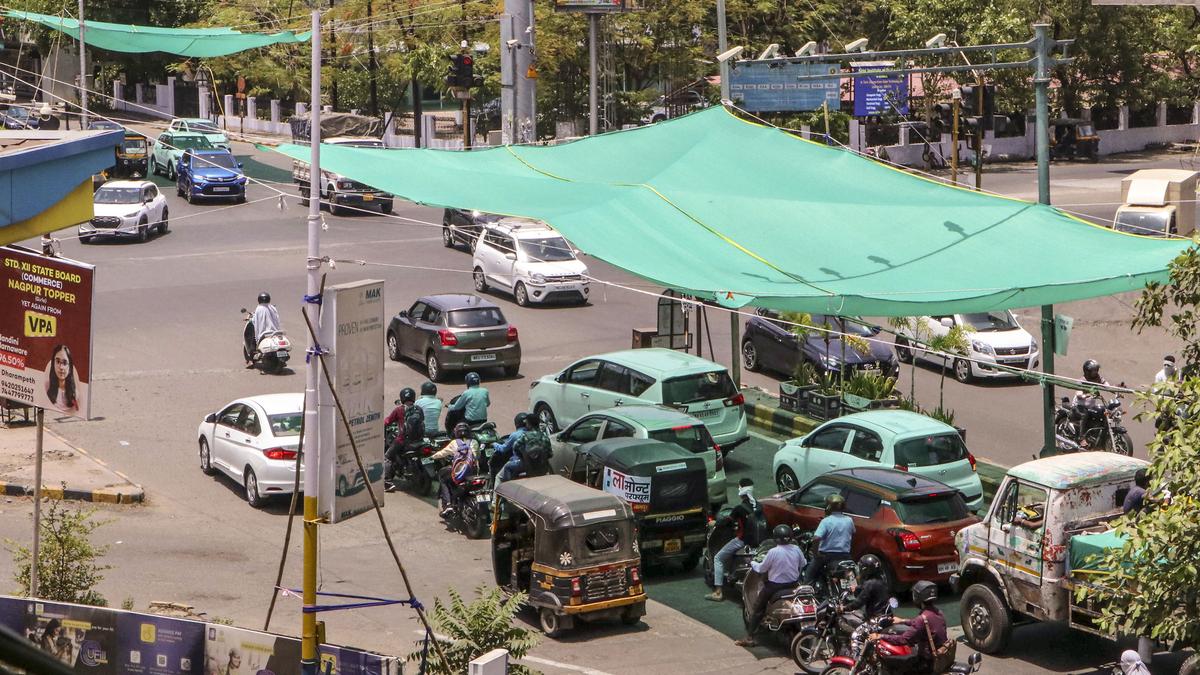
After Delhi, Nagpur weather sensor falsely reports 56 degrees Celsius
The Hindu
A day after the IMD attributed the record day-time temperature of 52.9 degrees Celsius in Delhi to a faulty instrument, another station in Nagpur incorrectly reported a temperature of 56 degrees
A day after the India Meteorological Department (IMD) attributed the record day-time temperature of 52.9 degrees Celsius in Delhi to a faulty instrument, another station in Nagpur incorrectly reported a temperature of 56 degrees on Friday.
The IMD said it was due to a “failure of electronic sensors”. As in the case of Mungeshpur in Delhi, the erroneous temperature was recorded at an automatic weather station (AWS) in Nagpur, Maharashtra.
Also read: Why is north and central India facing a severe heatwave? | Explained
Unlike manually operated weather stations where personnel take periodic measurements of the temperature using thermometers, AWS rely on sensors that detect changes in temperature. While considered accurate, they are complex instruments prone to errors, which are harder to detect and rectify.
“The report of 56 C on 30/05/2024 is not correct and not declared officially,” the IMD said in a statement on Friday, “The temperature sensor at Nagpur City AWS, maintained by RMC Nagpur (Regional Meteorological Centre) is currently malfunctioning, and RMC Nagpur is working to fix it. However, it is important to note that electronic sensors can fail at extreme weather conditions. Automatic systems may report erroneous reading due to various reasons such as site conditions, damage of sensors or its protection shields etc.”
The statement added that the IMD staff were trained to detect such erroneous readings, and anomalous readings were filtered in the “pre-processing” stage. The actual temperature at Nagpur’s Central Institute for Cotton Research – located close to the aberrant AWS – was 44 degrees Celsius.
While a final report by the IMD on the malfunctioning sensors in Delhi is awaited, experts have said that all instruments – whether manual or automatic – require regular calibration much like weighing scales and manual watches, when they display erroneous values. “When values go outside a certain range, there is usually a quality control system in place to review the readings. We need to strengthen this system,” said M. Ravichandran, Secretary, Ministry of Earth Sciences, the parent organisation of the IMD.

“Writing, in general, is a very solitary process,” says Yauvanika Chopra, Associate Director at The New India Foundation (NIF), which, earlier this year, announced the 12th edition of its NIF Book Fellowships for research and scholarship about Indian history after Independence. While authors, in general, are built for it, it can still get very lonely, says Chopra, pointing out that the fellowship’s community support is as valuable as the monetary benefits it offers. “There is a solid community of NIF fellows, trustees, language experts, jury members, all of whom are incredibly competent,” she says. “They really help make authors feel supported from manuscript to publication, so you never feel like you’re struggling through isolation.”

Several principals of government and private schools in Delhi on Tuesday said the Directorate of Education (DoE) circular from a day earlier, directing schools to conduct classes in ‘hybrid’ mode, had caused confusion regarding day-to-day operations as they did not know how many students would return to school from Wednesday and how would teachers instruct in two modes — online and in person — at once. The DoE circular on Monday had also stated that the option to “exercise online mode of education, wherever available, shall vest with the students and their guardians”. Several schoolteachers also expressed confusion regarding the DoE order. A government schoolteacher said he was unsure of how to cope with the resumption of physical classes, given that the order directing government offices to ensure that 50% of the employees work from home is still in place. On Monday, the Commission for Air Quality Management in the National Capital Region and Adjoining Areas (CAQM) had, on the orders of the Supreme Court, directed schools in Delhi-NCR to shift classes to the hybrid mode, following which the DoE had issued the circular. The court had urged the Centre’s pollution watchdog to consider restarting physical classes due to many students missing out on the mid-day meals and lacking the necessary means to attend classes online. The CAQM had, on November 20, asked schools in Delhi-NCR to shift to the online mode of teaching.









